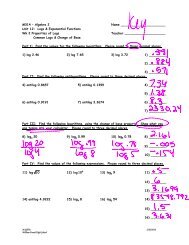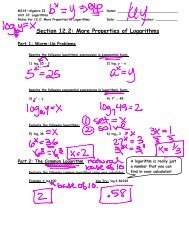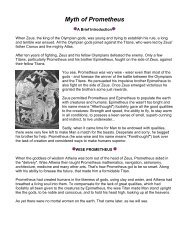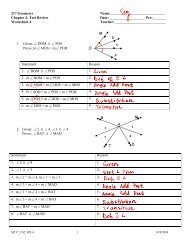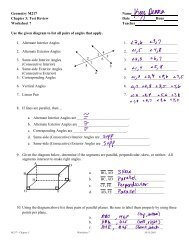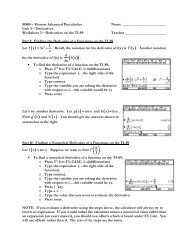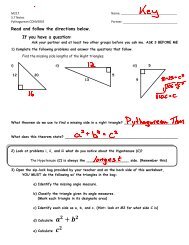Create successful ePaper yourself
Turn your PDF publications into a flip-book with our unique Google optimized e-Paper software.
Women During <strong>World</strong> <strong>War</strong> <strong>II</strong><br />
During <strong>World</strong> <strong>War</strong> <strong>II</strong>, U.S. industry converted from consumer production to military production. Unemployment, which had<br />
been high during the Great Depression, dropped from 9.9 percent on the eve of Pearl Harbor to 1.2 percent by the end of<br />
the war. Aircraft production increased from a prewar rate of 2,100 planes a year to nearly 100,000 planes in 1944. More<br />
than 70,000 ships were constructed during the war years. This increased production created a huge demand for labor,<br />
exacerbated by the many American men who left jobs to join the U.S. military forces.<br />
In response to the need for labor, many American women entered the workforce for the first time. Posters of "Rosie the<br />
Riveter," who symbolized women who worked on factory assembly lines, and popular songs persuaded women to fulfill<br />
their patriotic duty and join the war effort. The following slogans were created to reassure women that they could do<br />
factory work as easily as household work: "If you've sewed on buttons, or made buttonholes on a machine, you can learn<br />
to do spot welding on airplane parts" and "If you've used an electric mixer in your kitchen, you can learn to run a drill<br />
press. If you've followed recipes exactly in making cakes, you can learn to load shell." Urged by the government, tens of<br />
thousands of women who had never worked outside the home took jobs from clerical positions to riveters and welders in<br />
factories.<br />
By 1944, 3.5 million women worked with the 6 million men on assembly lines. During the course of the war, over 6 million<br />
women entered the labor force. Women who had already been working, usually in service and menial jobs, eagerly<br />
applied for the better-paying positions in war industries. <strong>War</strong> work increased women's independence, income, and pride.<br />
One woman involved in the war effort said, "We were happy to be doing it. We felt terrific. Lunch hour would find us<br />
spread out on the sidewalk. Women welders with our outfits on, and usually a quart of milk in one hand and a salami<br />
sandwich in another. It was an experience that none of us had ever had before. Workers from other ships would look at us<br />
and see that we were welders and it was a terrifically wonderful thing." The opportunities the war offered women started a<br />
societal trend of women working outside the home that extended into the rest of the century.<br />
Women also served in the military during the war. For the first time in U.S. history women were permitted to volunteer for<br />
non-combat duty. Except for combat, they were enlisted to perform all types of jobs. For instance, women flew as civilians<br />
in the Women's Air Force Service, transporting military planes to Great Britain and other war fronts. By the war's end,<br />
more than 200,000 women had served in the armed forces.<br />
Although women made important strides in gaining new skills, income, and freedom, men continued to dominate<br />
supervisory positions. Most jobs were defined as either "men's work" or "women's work," and wage scales, despite<br />
government promises to the contrary, discriminated against women.<br />
In addition, even with women's important contributions to the war effort, most women were forced out of the workforce at<br />
the end of the war. While millions of women wanted to keep their jobs, most were pushed aside to make room for<br />
returning GIs. A wartime survey showed that over 75 percent of women working in two of the largest cities in the country -<br />
New York and Detroit-wanted to keep their jobs after the war. However, as one woman said, "After the war it was<br />
completely different. I went around and applied to different factories, but there were no jobs for me. So I had to fall back<br />
on the only other work I knew, and that was doing domestic work. And it was a very defeating feeling, very."<br />
Women's contributions to the military were similarly ignored. It was not until 1979 that those who served in <strong>World</strong> <strong>War</strong> <strong>II</strong><br />
were recognized as war veterans who were entitled to benefits.



